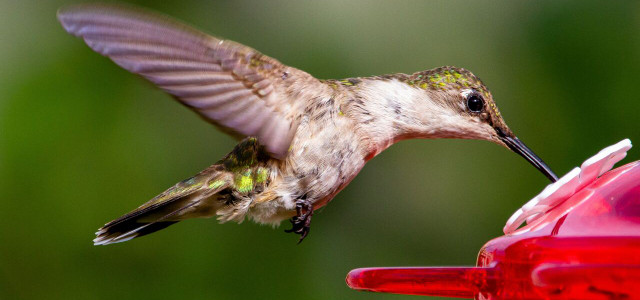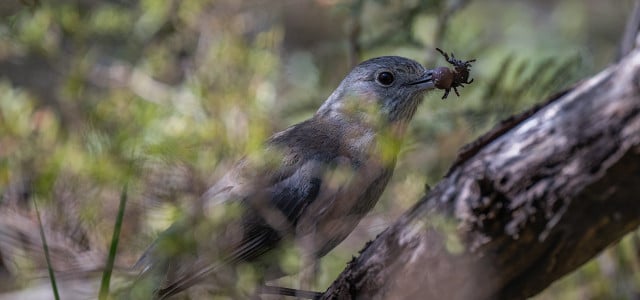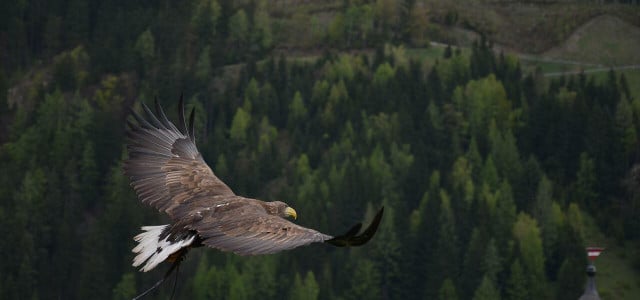These four homemade hummingbird nectar recipes use sugar, fruit juice and honey to attract hummingbirds and other pollinators to your garden.
Hummingbirds are not only beautiful creatures but also essential members of our ecosystem. They play a vital role as pollinators and help maintain the health and diversity of flowers and plants in our gardens. A hummingbird’s diet consists mainly of nectar from flowers, but they also eat small insects such as mosquitos, beetles and aphids — so they’re a helpful bird to have around!
One way to attract hummingbirds is by providing them with homemade hummingbird nectar. In this article, we’ll explore four hummingbird nectar recipes that will entice these fascinating birds to visit your garden.
1. Basic Hummingbird Nectar Recipe (aka Sugar Water for Hummingbirds)
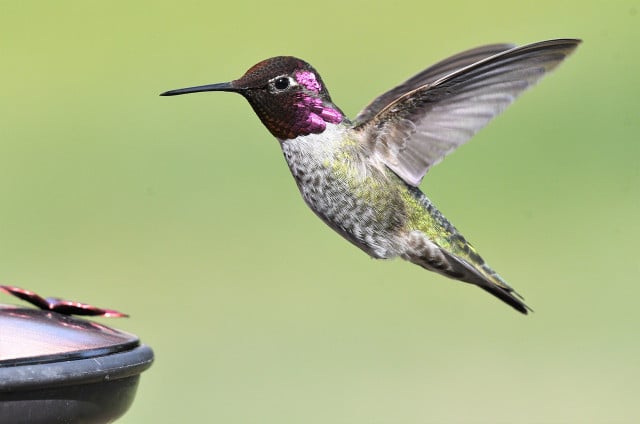
The key to making the perfect hummingbird nectar is maintaining the right sugar-to-water ratio. A 1:4 ratio is best.
Ingredients:
- 4 cups hot water
- 1 cup granulated sugar
Instructions: Combine the sugar and water in a saucepan and heat it gently, stirring occasionally, until the sugar is dissolved. Allow the mixture to cool before filling your hummingbird feeder. Remember to clean your feeder every few days and replace the nectar to ensure freshness and prevent bacterial growth.
Want to adapt this recipe for winter? Use a 3:1 sugar-to-water ratio instead. During the colder months, a slightly stronger solution can keep them warm while overwintering. Read Where Do Hummingbirds Go In Winter to learn more.
In addition to providing nectar, you can further support hummingbirds by planting native flowering plants in your garden. These plants offer natural nectar sources and will help create a diverse and thriving ecosystem for the birds to enjoy. Research native plants that are favored by hummingbirds in your region and incorporate them into your landscape.
Check out our guide to Native Gardening For Wildlife for inspiration, tips and tricks.
Enhanced Hummingbird Nectar Recipes
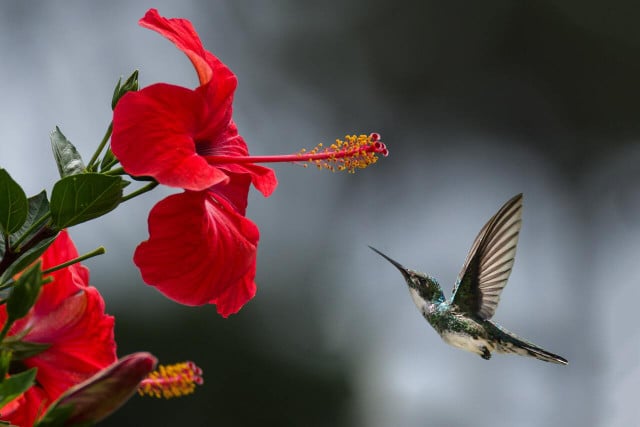


While simple sugar water for hummingbirds gives them the energy they need, some enthusiasts like to enhance their DIY hummingbird food by adding extra nutrients. These additional ingredients can provide added vitamins and minerals that may benefit the hummingbirds’ health. Here are a few options:
2. Hummingbird Nectar With Fruit Juice
Adding fruit juice to homemade hummingbird food can provide extra vitamins and minerals. Opt for natural, unsweetened fruit juices, such as orange or cranberry juice, which are high in vitamin C. To make hummingbird nectar with fruit juice, you will need:
Ingredients:
- 1 cup of granulated white sugar
- 3 cups of water
- 1 cup of unsweetened fruit juice
Instructions: Combine the sugar, water, and fruit juice in a saucepan, heating and stirring gently until the sugar is dissolved. Allow the mixture to cool before filling your hummingbird feeder.
3. Hummingbird Nectar With Honey
Honey is a natural sweetener with antimicrobial properties that can help keep homemade hummingbird nectar fresh for longer. However, honey should be used sparingly, as it can ferment quickly and may be harmful to hummingbirds if it becomes contaminated. To make hummingbird nectar with honey, you will need:
Ingredients:
- 1/4 cup of honey
- 3/4 cup of granulated white sugar
- 4 cups of water
Instructions: Combine the honey, sugar, and water in a saucepan, heating and stirring gently until the honey and sugar are dissolved. Allow the mixture to cool before filling your hummingbird feeder.
Note: Use these additives sparingly and be cautious of potential risks, such as fermentation or bacterial growth. Regardless of the homemade hummingbird nectar recipe you choose, remember to clean your feeder every few days and replace the nectar to ensure freshness and prevent any health risks to the birds.
4. Special Food for Migratory Birds
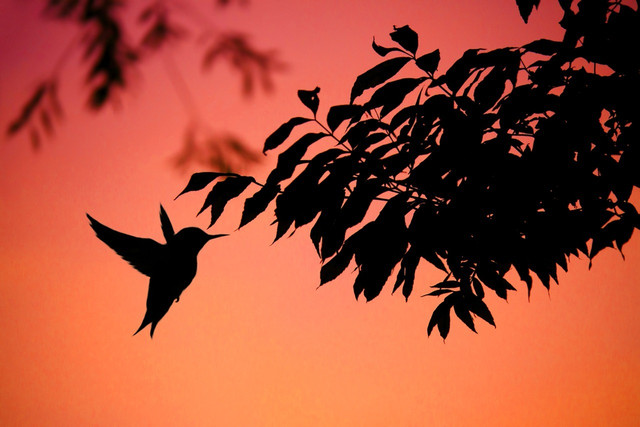


Migratory hummingbirds have unique energy requirements during their long journeys, often covering thousands of miles as they travel between their breeding and wintering grounds. Providing them with nectar that has a higher sugar concentration can help meet their increased energy needs and support their stamina during migration.
To make DIY hummingbird food for migratory birds, use a 1:3 sugar-to-water ratio, which will provide a higher concentration of energy compared to the standard 1:4 ratio.
Ingredients:
- 1 cup of granulated white sugar
- 3 cups of water
Instructions: Combine the sugar and water in a saucepan, heating and stirring gently until the sugar is dissolved. Allow the mixture to cool before filling your hummingbird feeder.
Should You Add Red Food Coloring?
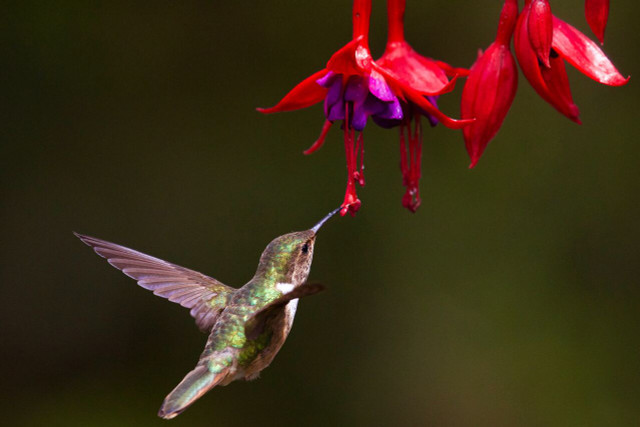


While red is a color that naturally attracts hummingbirds, it is unnecessary and potentially harmful to use artificial red dye in your hummingbird nectar recipe. Instead, you can use alternative methods to draw their attention, such as brightly colored feeders or planting vibrant flowers near the feeding area.
However, if you still prefer to add some red, consider using natural ingredients like beet juice or raspberry juice to add color without the risks associated with artificial dyes. Check out how to make natural red food coloring for more details.
Choosing the Ideal Location for Your Hummingbird Feeder
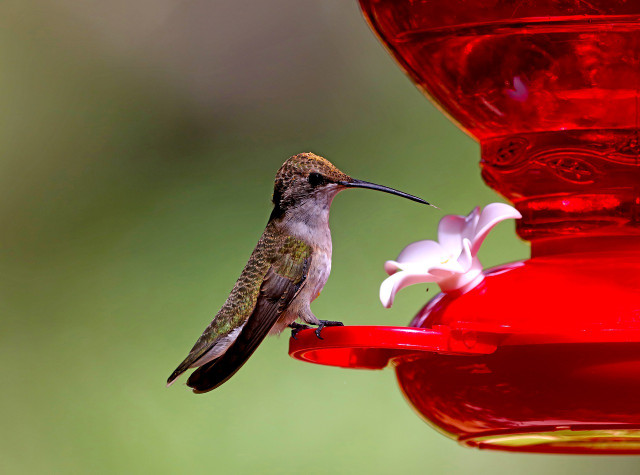


Once you’ve learned how to make hummingbird nectar, placing it in the right location can make a significant difference in attracting these delightful birds to your garden. Here are some tips for choosing the ideal spot for your hummingbird feeder, ensuring their comfort and safety while providing you with the best opportunity to observe and enjoy their presence.
Visibility: Select a location that is easily visible to both you and the birds. Placing the feeder near a window, patio or seating area will allow you to watch and appreciate these beautiful creatures. Ensure that the feeder is also visible to the hummingbirds as they fly by, so they can easily locate the nectar source.
Shelter and protection: Hummingbirds prefer feeding in areas that offer some shelter and protection from potential predators, such as cats or larger birds. Place your feeder near trees or shrubs that provide natural cover and perching spots for the hummingbirds to rest and survey their surroundings. Ensure there is enough space between the feeder and the foliage to prevent predators from ambushing the birds while they feed.
Sun and shade balance: Ideally, position your hummingbird feeder in a location that receives a mix of sun and shade throughout the day. Morning sun exposure can help keep the nectar fresh by evaporating any excess moisture, while afternoon shade will prevent the nectar from becoming too warm or fermenting too quickly.
Distance from other bird feeders: If you have other water for birds or feeders in your garden, it’s a good idea to place your hummingbird feeder at least 10-15 feet away from them. This separation will help reduce competition and territorial behavior among different bird species, allowing the hummingbirds to feed in peace.
Easy access for cleaning and refilling: Choose a location that allows for easy access to the feeder, making it convenient for you to clean and refill the homemade hummingbird nectar regularly. Regular maintenance is essential to prevent bacterial growth and keep the nectar fresh for your hummingbird visitors.
Multiple feeders: If you have a large garden or want to accommodate more birds, consider placing multiple feeders throughout your garden. Position them at varying heights and distances from each other to reduce competition and provide feeding opportunities for multiple hummingbirds at once.
By carefully considering the location of your hummingbird nectar, you can create a welcoming and attractive environment for these fascinating birds while enhancing your own enjoyment and appreciation of their beauty and charm.
Read more:
- How to Make a Bird Box With Easy Customizations
- How Do Birds Stay Warm in Winter & How Can You Help?
- Why Bread is Bad for Birds, and Better Foods to Feed Them
- Homemade Suet for Birds: Easy Bird Food Recipe
Do you like this post?






